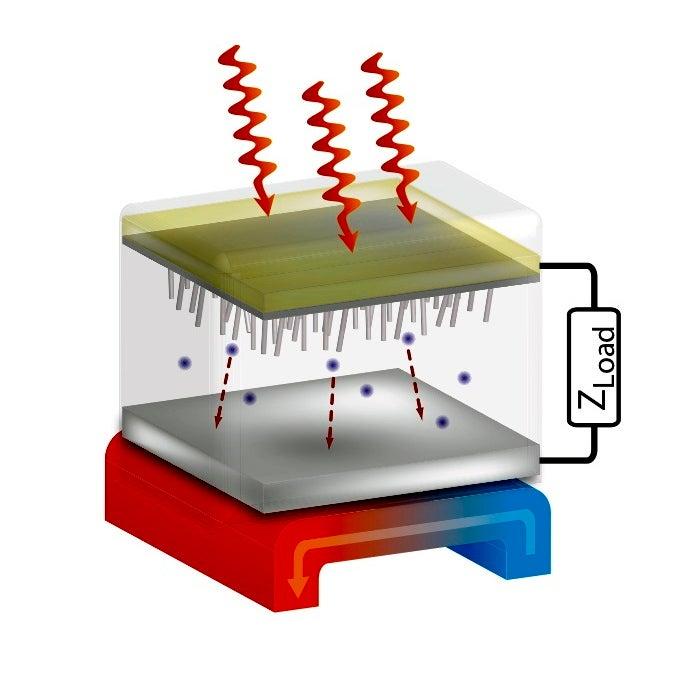Innovative SIMES Solar-Energy Technology Funded by DOE
The U.S. Department of Energy has awarded a research group at the Stanford Institute for Materials and Energy Sciences (SIMES) a grant of up to $900,000 over three years to design, build and test an innovative high-temperature solar-energy conversion device that could enable more efficient utility-scale concentrating solar power systems.
By Mike Ross
The U.S. Department of Energy has awarded a research group at the Stanford Institute for Materials and Energy Sciences (SIMES) a grant of up to $900,000 over three years to design, build and test an innovative high-temperature solar-energy conversion device that could enable more efficient utility-scale concentrating solar power systems.
The new device is based on the photon-enhanced thermionic emission (PETE) process first demonstrated in 2010 by a group led by SIMES researchers Nicholas Melosh and Zhi-Xun Shen. SIMES is a joint SLAC/Stanford institute.
Most solar collectors rely on just one characteristic of sunlight to generate energy: Photovoltaic cells use the quantum characteristics of photons of sunlight to convert their energy into electricity, while thermal collectors use the sun’s rays as a simple heat source.
Previous attempts to combine the two approaches to get greater efficiency have failed, because the high temperatures needed for efficient thermal energy collection greatly reduce the efficiency of photovoltaic cells.
But PETE finds a way around this problem by using thermal energy to thermionically emit photo-excited electrons. First explored in the 1950s, pure thermionic devices generate electrical current directly from electrons expelled from hot materials. Both NASA and the Soviet space program developed solar-heated thermionic converters with up to 10 to 15 percent energy-conversion efficiencies for deep space missions and other applications.
The requirement that these devices operate at high temperatures has so far prevented widespread terrestrial commercialization of thermionics. That may change if Melosh and colleagues can successfully marry their PETE process with large utility-scale solar systems, which typically use acres of mirrors to concentrate sunlight and heat water to produce steam for turbines that generate electricity. (The most common solar concentrating systems are parabolic troughs, linear Fresnel reflectors, dish engines and power towers.)
The PETE modules are solid-state nanostructured materials that could be integrated with existing solar-concentrator systems. When photons hit a PETE module, it heats up and produces electric current. Any leftover heat would contribute to the solar-thermal cycle.
The SIMES group’s goal is to demonstrate a next-generation thermionic energy-conversion device with a stand-alone laboratory efficiency greater than 15 percent, followed by a stand-alone unit that’s more than 30 percent efficient. Ultimately, the overall efficiency of combined PETE/solar thermal cycles should exceed 50 percent, Melosh says.
“We've recently developed a new material design that increases the electron emission efficiency by 1,000 times over our initial device, which is why the technology is now so promising for devices,” Melosh said.
The next challenge to advancing this technology is developing higher-efficiency electron-generating structures that are stable at high temperatures, requiring both theoretical and experimental analysis of new materials.
“SLAC is perfectly positioned to address this task,” Melosh said.
The grant to SIMES is one of 21 research awards announced on June 13 by the DOE, totaling $56 million over three years (subject to congressional appropriation). They are part of the department’s SunShot Initiative, which aims to reduce the installed cost of solar energy systems by about 75 percent by the end of this decade.

(Image courtesy Nick Melosh)